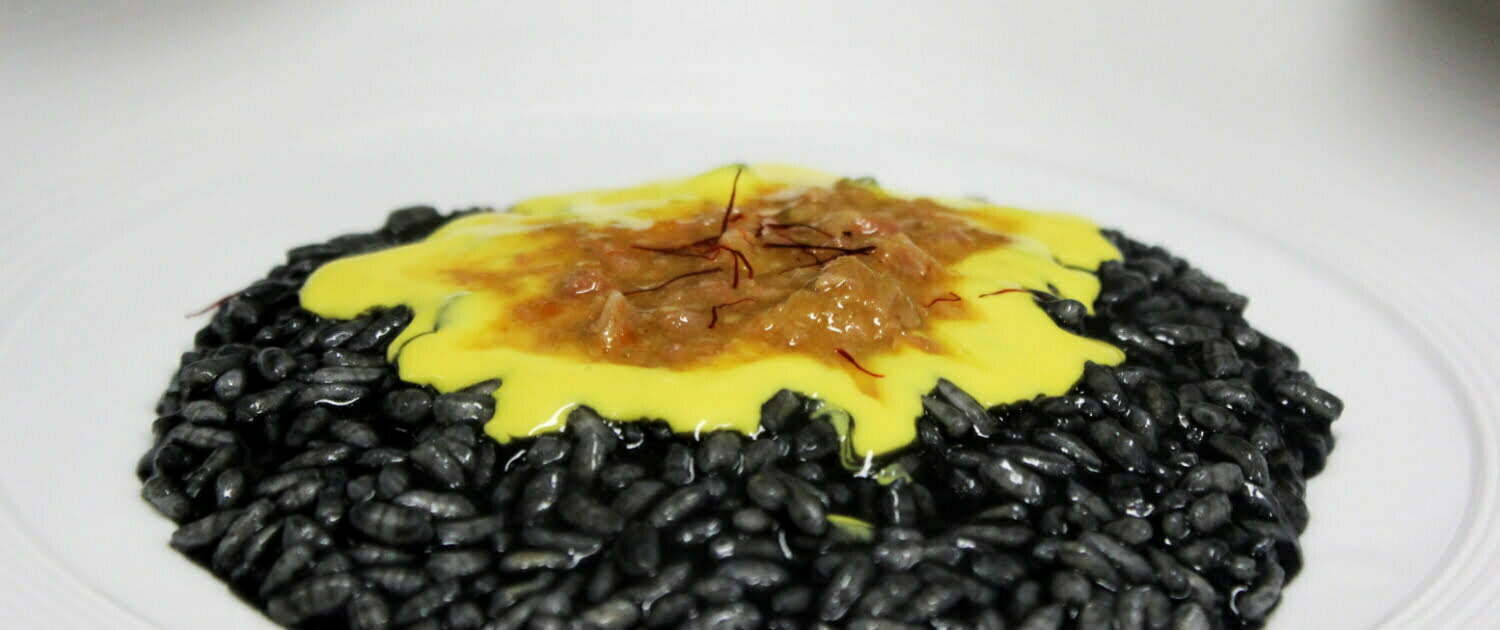Ingredients for 4 servings
For the broth
- 50 g onion
- 50 g celery
- 50 g carrot
- 1 g pepper in grains
- 1 g laurel
For the ossobuco ragout
- 500 g veal ossobuco
- 100 g onions
- 100 g celery
- Sedano 100g
- 1 g pepper in grains
- 1 g laurel
- 100 g dry white wine
- 50 g peeled tomatoes
- 30 g fine sweet salt from Cervia
- 200 g vegetable broth
For the saffron zabaione
- 120 g egg yolks
- 200 g 34% fat cream
- 15 g fine salt
- 2 g saffron
For the risotto
- 280 g Carnaroli rice from Riserva San Massimo
- 50 g dry white wine
- 25 g active charcoal
- 35 g butter
- 35 g Grana Padano D.O.P. 24 months
- 10 g fine sweet salt from Cervia
- 50 g extra virgin olive oil
Difficulty level
Preparation time
20 minutes
Cooking time
20 minutes
Preparation
Prepare the broth in a small pot, cooking all the ingredients in water for circa 30 minutes over a low flame. Start the preparation for the ragout in another pan. Soften the finely chopped vegetables over a low flame, add the ossobuco and roast them on a very low flame. Deglaze with the white wine, letting the alcohol evaporate and continue the cooking process for circa 2 hours adding the tomatoes and some of the vegetable broth. When the ragout is cooked, put the ossobuchi on a plate and chop them finely, mixing also the marrow.
Prepare the zabaione in a bowl, whisking the egg yolks over a waterbath until they turn spongy. Gradually add the lukewarm cream with and the saffron. Don’t forget to salt.
Roast the rice in a pan with hot olive oil, deglaze with white wine, let the alcohol evaporate and continue the cooking process gradually adding vegetable broth. Halfway through the cooking process, add the charcoal and cook for circa 18 minutes, cream the risotto with butter and grated parmigiano reggiano cheese. Serve on a hot plate and decorate it with the saffron zabaione and the ossobuco ragout.
This recipe comes from the revisitation of the typical recipe for Risotto Milanese. the charcoal adds the element of nightlife of Milan to the risotto, the saffron isn’t added directly to the risotto, but as a zabaione that together with the ragout represents the decoration of the risotto.
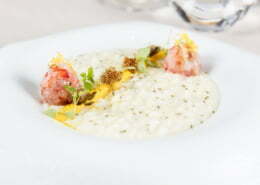 https://riservasanmassimo.net/wp-content/uploads/2019/11/Riso-Carnaroli-autentico-Riserva-San-Massimo-Gamberi-Rossi-Limone-Rosmarino-capperi-1.jpg
700
700
Marco B
https://riservasanmassimo.net/wp-content/uploads/2021/03/RSM-Logo-RGB300x195.png
Marco B2019-11-23 20:45:152023-02-24 19:10:31Carnaroli Classic Rice “Riserva San Massimo” lemon, Red Prawn, capers, rosemary
https://riservasanmassimo.net/wp-content/uploads/2019/11/Riso-Carnaroli-autentico-Riserva-San-Massimo-Gamberi-Rossi-Limone-Rosmarino-capperi-1.jpg
700
700
Marco B
https://riservasanmassimo.net/wp-content/uploads/2021/03/RSM-Logo-RGB300x195.png
Marco B2019-11-23 20:45:152023-02-24 19:10:31Carnaroli Classic Rice “Riserva San Massimo” lemon, Red Prawn, capers, rosemary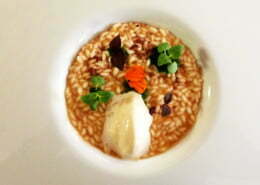 https://riservasanmassimo.net/wp-content/uploads/2019/11/Risotto-gambero-di-fiume-granita-di-Acerbus-Croce-di-Malto-ristorante-il-clandestino-1.jpg
600
600
Marco B
https://riservasanmassimo.net/wp-content/uploads/2021/03/RSM-Logo-RGB300x195.png
Marco B2019-11-23 20:34:172019-11-23 20:35:02Risotto with freshwater crayfish, granita of Acerbus from Croce di Malto
https://riservasanmassimo.net/wp-content/uploads/2019/11/Risotto-gambero-di-fiume-granita-di-Acerbus-Croce-di-Malto-ristorante-il-clandestino-1.jpg
600
600
Marco B
https://riservasanmassimo.net/wp-content/uploads/2021/03/RSM-Logo-RGB300x195.png
Marco B2019-11-23 20:34:172019-11-23 20:35:02Risotto with freshwater crayfish, granita of Acerbus from Croce di Malto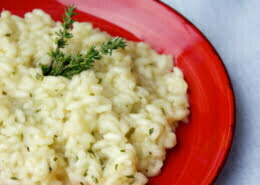 https://riservasanmassimo.net/wp-content/uploads/2019/11/risotto-pepe-verde-e-zenzero.jpg
800
800
Marco B
https://riservasanmassimo.net/wp-content/uploads/2021/03/RSM-Logo-RGB300x195.png
Marco B2019-11-23 19:02:062019-11-23 19:02:39Risotto with green pepper, herbs and ginger
https://riservasanmassimo.net/wp-content/uploads/2019/11/risotto-pepe-verde-e-zenzero.jpg
800
800
Marco B
https://riservasanmassimo.net/wp-content/uploads/2021/03/RSM-Logo-RGB300x195.png
Marco B2019-11-23 19:02:062019-11-23 19:02:39Risotto with green pepper, herbs and ginger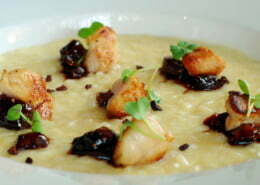 https://riservasanmassimo.net/wp-content/uploads/2019/11/Risotto-fichi-caramellati-animelle-di-vitello-glassate-al-grue-di-cacao-1.jpg
750
750
Marco B
https://riservasanmassimo.net/wp-content/uploads/2021/03/RSM-Logo-RGB300x195.png
Marco B2019-11-23 18:32:332019-11-23 18:33:05Risotto with caramelized figs and grué di cacao glazed veal sweetbread
https://riservasanmassimo.net/wp-content/uploads/2019/11/Risotto-fichi-caramellati-animelle-di-vitello-glassate-al-grue-di-cacao-1.jpg
750
750
Marco B
https://riservasanmassimo.net/wp-content/uploads/2021/03/RSM-Logo-RGB300x195.png
Marco B2019-11-23 18:32:332019-11-23 18:33:05Risotto with caramelized figs and grué di cacao glazed veal sweetbread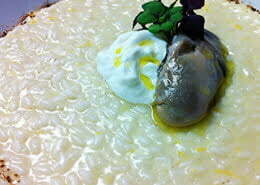 https://riservasanmassimo.net/wp-content/uploads/2019/11/Risotto-mantecato-al-limone-burrata-ostrica-al-vapore-e-polvere-di-capperi-rist-moma-1.jpg
700
700
Marco B
https://riservasanmassimo.net/wp-content/uploads/2021/03/RSM-Logo-RGB300x195.png
Marco B2019-11-23 18:28:482019-11-23 18:29:21Risotto with lemon, burrata, steamed oyster and caper powder
https://riservasanmassimo.net/wp-content/uploads/2019/11/Risotto-mantecato-al-limone-burrata-ostrica-al-vapore-e-polvere-di-capperi-rist-moma-1.jpg
700
700
Marco B
https://riservasanmassimo.net/wp-content/uploads/2021/03/RSM-Logo-RGB300x195.png
Marco B2019-11-23 18:28:482019-11-23 18:29:21Risotto with lemon, burrata, steamed oyster and caper powder https://riservasanmassimo.net/wp-content/uploads/2019/11/Risotto-Milano-by-night-risotto-alla-milanese-rivisitato-dello-chef-Antonio-Danise-1.jpg
1000
1000
Marco B
https://riservasanmassimo.net/wp-content/uploads/2021/03/RSM-Logo-RGB300x195.png
Marco B2019-11-23 18:25:122019-11-23 18:25:49Risotto Milano by night – Risotto Milanese revisited
https://riservasanmassimo.net/wp-content/uploads/2019/11/Risotto-Milano-by-night-risotto-alla-milanese-rivisitato-dello-chef-Antonio-Danise-1.jpg
1000
1000
Marco B
https://riservasanmassimo.net/wp-content/uploads/2021/03/RSM-Logo-RGB300x195.png
Marco B2019-11-23 18:25:122019-11-23 18:25:49Risotto Milano by night – Risotto Milanese revisited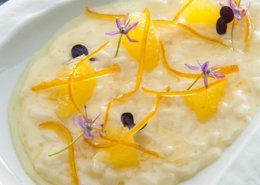 https://riservasanmassimo.net/wp-content/uploads/2019/11/Risotto-al-Franciacorta-mantecato-agli-agrumi.jpg
700
700
Marco B
https://riservasanmassimo.net/wp-content/uploads/2021/03/RSM-Logo-RGB300x195.png
Marco B2019-11-23 18:09:092019-11-23 18:10:26Risotto with Franciacorta, creamed with citrus fruits
https://riservasanmassimo.net/wp-content/uploads/2019/11/Risotto-al-Franciacorta-mantecato-agli-agrumi.jpg
700
700
Marco B
https://riservasanmassimo.net/wp-content/uploads/2021/03/RSM-Logo-RGB300x195.png
Marco B2019-11-23 18:09:092019-11-23 18:10:26Risotto with Franciacorta, creamed with citrus fruits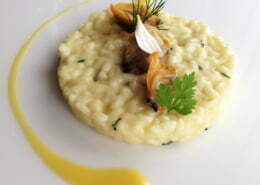 https://riservasanmassimo.net/wp-content/uploads/2019/11/Risotto-allolio-doliva-e-vongole-chef-cannavacciuolo-1.jpg
950
950
Marco B
https://riservasanmassimo.net/wp-content/uploads/2021/03/RSM-Logo-RGB300x195.png
Marco B2019-11-22 19:01:092019-11-22 19:01:41Risotto with olive oil and clams with thyme and lemon
https://riservasanmassimo.net/wp-content/uploads/2019/11/Risotto-allolio-doliva-e-vongole-chef-cannavacciuolo-1.jpg
950
950
Marco B
https://riservasanmassimo.net/wp-content/uploads/2021/03/RSM-Logo-RGB300x195.png
Marco B2019-11-22 19:01:092019-11-22 19:01:41Risotto with olive oil and clams with thyme and lemon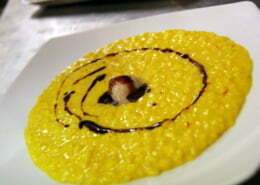 https://riservasanmassimo.net/wp-content/uploads/2019/11/risotto-alla-milanese-con-midollo.jpg
500
500
Marco B
https://riservasanmassimo.net/wp-content/uploads/2021/03/RSM-Logo-RGB300x195.png
Marco B2019-11-22 18:56:432019-11-22 18:57:25Risotto Milanese with Marrow
https://riservasanmassimo.net/wp-content/uploads/2019/11/risotto-alla-milanese-con-midollo.jpg
500
500
Marco B
https://riservasanmassimo.net/wp-content/uploads/2021/03/RSM-Logo-RGB300x195.png
Marco B2019-11-22 18:56:432019-11-22 18:57:25Risotto Milanese with Marrow https://riservasanmassimo.net/wp-content/uploads/2019/11/risotto-agrumi-1.jpg
650
650
Marco B
https://riservasanmassimo.net/wp-content/uploads/2021/03/RSM-Logo-RGB300x195.png
Marco B2019-11-22 18:52:492019-11-22 18:53:27Citrus Risotto
https://riservasanmassimo.net/wp-content/uploads/2019/11/risotto-agrumi-1.jpg
650
650
Marco B
https://riservasanmassimo.net/wp-content/uploads/2021/03/RSM-Logo-RGB300x195.png
Marco B2019-11-22 18:52:492019-11-22 18:53:27Citrus Risotto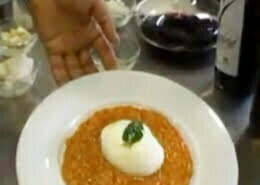 https://riservasanmassimo.net/wp-content/uploads/2019/11/risotto-pomodoro-fresco-e-bufala-1.jpg
450
450
Marco B
https://riservasanmassimo.net/wp-content/uploads/2021/03/RSM-Logo-RGB300x195.png
Marco B2019-11-22 18:36:242019-11-22 18:37:41Risotto with tomato and fresh buffalo milk mozzarella
https://riservasanmassimo.net/wp-content/uploads/2019/11/risotto-pomodoro-fresco-e-bufala-1.jpg
450
450
Marco B
https://riservasanmassimo.net/wp-content/uploads/2021/03/RSM-Logo-RGB300x195.png
Marco B2019-11-22 18:36:242019-11-22 18:37:41Risotto with tomato and fresh buffalo milk mozzarella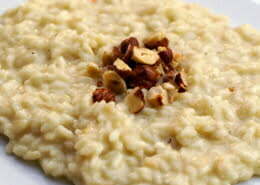 https://riservasanmassimo.net/wp-content/uploads/2019/11/risotto-alle-nocciole-1.jpg
350
350
Marco B
https://riservasanmassimo.net/wp-content/uploads/2021/03/RSM-Logo-RGB300x195.png
Marco B2019-11-22 18:28:262019-11-22 18:29:05Risotto with Castelmagno cheese and hazelnuts from the Langhe
https://riservasanmassimo.net/wp-content/uploads/2019/11/risotto-alle-nocciole-1.jpg
350
350
Marco B
https://riservasanmassimo.net/wp-content/uploads/2021/03/RSM-Logo-RGB300x195.png
Marco B2019-11-22 18:28:262019-11-22 18:29:05Risotto with Castelmagno cheese and hazelnuts from the Langhe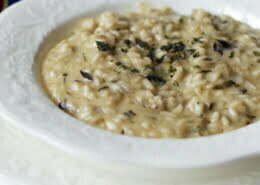 https://riservasanmassimo.net/wp-content/uploads/2019/11/Risotto-al-radicchio-rosso-tardivo-di-treviso-1.jpg
350
350
Marco B
https://riservasanmassimo.net/wp-content/uploads/2021/03/RSM-Logo-RGB300x195.png
Marco B2019-11-22 18:18:082019-11-22 18:19:58Risotto with red radicchio from Treviso, fondue and herbs
https://riservasanmassimo.net/wp-content/uploads/2019/11/Risotto-al-radicchio-rosso-tardivo-di-treviso-1.jpg
350
350
Marco B
https://riservasanmassimo.net/wp-content/uploads/2021/03/RSM-Logo-RGB300x195.png
Marco B2019-11-22 18:18:082019-11-22 18:19:58Risotto with red radicchio from Treviso, fondue and herbs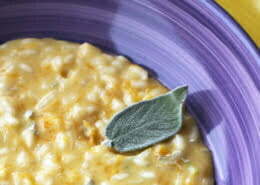 https://riservasanmassimo.net/wp-content/uploads/2019/11/Risotto-alla-zucca-napoletana-gorgonzola-e-salvia-1.jpg
350
350
Marco B
https://riservasanmassimo.net/wp-content/uploads/2021/03/RSM-Logo-RGB300x195.png
Marco B2019-11-22 18:03:422019-11-22 18:29:28Risotto with neapolitan pumpkin, Gorgonzola and Sage
https://riservasanmassimo.net/wp-content/uploads/2019/11/Risotto-alla-zucca-napoletana-gorgonzola-e-salvia-1.jpg
350
350
Marco B
https://riservasanmassimo.net/wp-content/uploads/2021/03/RSM-Logo-RGB300x195.png
Marco B2019-11-22 18:03:422019-11-22 18:29:28Risotto with neapolitan pumpkin, Gorgonzola and Sage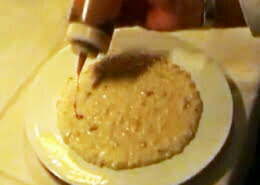 https://riservasanmassimo.net/wp-content/uploads/2019/11/Risotto-toma-piemontese-e-braulio-1.jpg
450
450
Marco B
https://riservasanmassimo.net/wp-content/uploads/2021/03/RSM-Logo-RGB300x195.png
Marco B2019-11-22 17:31:512019-11-22 17:32:44Creamy risotto with Toma Piemontese cheese and Braulio reduction
https://riservasanmassimo.net/wp-content/uploads/2019/11/Risotto-toma-piemontese-e-braulio-1.jpg
450
450
Marco B
https://riservasanmassimo.net/wp-content/uploads/2021/03/RSM-Logo-RGB300x195.png
Marco B2019-11-22 17:31:512019-11-22 17:32:44Creamy risotto with Toma Piemontese cheese and Braulio reduction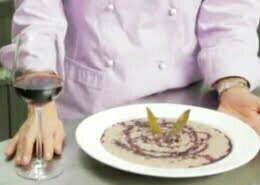 https://riservasanmassimo.net/wp-content/uploads/2019/11/risotto-al-vino-merletto-1.jpg
310
310
Marco B
https://riservasanmassimo.net/wp-content/uploads/2021/03/RSM-Logo-RGB300x195.png
Marco B2019-11-22 17:22:462019-11-22 17:23:18Risotto with Merletto wine
https://riservasanmassimo.net/wp-content/uploads/2019/11/risotto-al-vino-merletto-1.jpg
310
310
Marco B
https://riservasanmassimo.net/wp-content/uploads/2021/03/RSM-Logo-RGB300x195.png
Marco B2019-11-22 17:22:462019-11-22 17:23:18Risotto with Merletto wine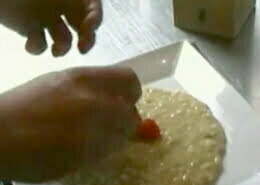 https://riservasanmassimo.net/wp-content/uploads/2019/11/risotto-strachitunt-e-timo.jpg
300
300
Marco B
https://riservasanmassimo.net/wp-content/uploads/2021/03/RSM-Logo-RGB300x195.png
Marco B2019-11-22 17:10:332019-11-22 17:11:43Risotto with Strachitunt cheese and Thyme
https://riservasanmassimo.net/wp-content/uploads/2019/11/risotto-strachitunt-e-timo.jpg
300
300
Marco B
https://riservasanmassimo.net/wp-content/uploads/2021/03/RSM-Logo-RGB300x195.png
Marco B2019-11-22 17:10:332019-11-22 17:11:43Risotto with Strachitunt cheese and Thyme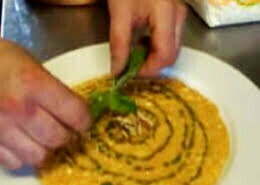 https://riservasanmassimo.net/wp-content/uploads/2019/11/Risotto-al-pomodoro-rosso-e-mantecato-al-caprino.jpg
312
312
Marco B
https://riservasanmassimo.net/wp-content/uploads/2021/03/RSM-Logo-RGB300x195.png
Marco B2019-11-22 17:01:262019-11-22 17:01:58Risotto with red tomatoes and creamed with Caprino cheese
https://riservasanmassimo.net/wp-content/uploads/2019/11/Risotto-al-pomodoro-rosso-e-mantecato-al-caprino.jpg
312
312
Marco B
https://riservasanmassimo.net/wp-content/uploads/2021/03/RSM-Logo-RGB300x195.png
Marco B2019-11-22 17:01:262019-11-22 17:01:58Risotto with red tomatoes and creamed with Caprino cheese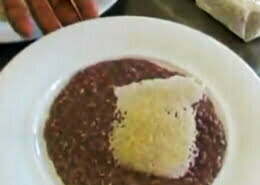 https://riservasanmassimo.net/wp-content/uploads/2019/11/Risotto-al-Barolo-1.jpg
450
450
Marco B
https://riservasanmassimo.net/wp-content/uploads/2021/03/RSM-Logo-RGB300x195.png
Marco B2019-11-22 16:32:192019-11-22 16:33:02Risotto with Barolo
https://riservasanmassimo.net/wp-content/uploads/2019/11/Risotto-al-Barolo-1.jpg
450
450
Marco B
https://riservasanmassimo.net/wp-content/uploads/2021/03/RSM-Logo-RGB300x195.png
Marco B2019-11-22 16:32:192019-11-22 16:33:02Risotto with Barolo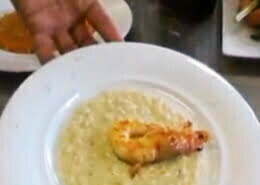 https://riservasanmassimo.net/wp-content/uploads/2019/11/Risotto-lime-e-mazzancolle.jpg
450
450
Marco B
https://riservasanmassimo.net/wp-content/uploads/2021/03/RSM-Logo-RGB300x195.png
Marco B2019-11-22 16:09:062019-11-22 16:09:41Risotto with Lime and striped prawns
https://riservasanmassimo.net/wp-content/uploads/2019/11/Risotto-lime-e-mazzancolle.jpg
450
450
Marco B
https://riservasanmassimo.net/wp-content/uploads/2021/03/RSM-Logo-RGB300x195.png
Marco B2019-11-22 16:09:062019-11-22 16:09:41Risotto with Lime and striped prawns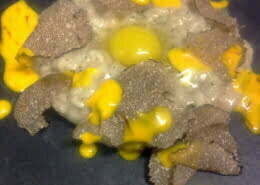 https://riservasanmassimo.net/wp-content/uploads/2019/11/Risotto-tartufo-nero-estivouova-di-quaglia-e-zafferano-ristorante-Ratana-1.jpg
700
700
Marco B
https://riservasanmassimo.net/wp-content/uploads/2021/03/RSM-Logo-RGB300x195.png
Marco B2019-11-22 16:05:562019-11-22 16:06:30Risotto with black summer truffle, quail egg and ginger cream
https://riservasanmassimo.net/wp-content/uploads/2019/11/Risotto-tartufo-nero-estivouova-di-quaglia-e-zafferano-ristorante-Ratana-1.jpg
700
700
Marco B
https://riservasanmassimo.net/wp-content/uploads/2021/03/RSM-Logo-RGB300x195.png
Marco B2019-11-22 16:05:562019-11-22 16:06:30Risotto with black summer truffle, quail egg and ginger cream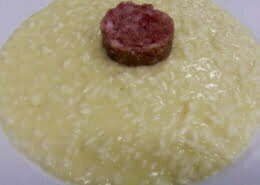 https://riservasanmassimo.net/wp-content/uploads/2019/11/Risotto-al-tomino-e-cotechino-pavese-ristorante-In-1.jpg
700
700
Marco B
https://riservasanmassimo.net/wp-content/uploads/2021/03/RSM-Logo-RGB300x195.png
Marco B2019-11-22 16:01:412019-11-22 16:02:28Risotto with Tomino cheese and Cotechino from Pavia
https://riservasanmassimo.net/wp-content/uploads/2019/11/Risotto-al-tomino-e-cotechino-pavese-ristorante-In-1.jpg
700
700
Marco B
https://riservasanmassimo.net/wp-content/uploads/2021/03/RSM-Logo-RGB300x195.png
Marco B2019-11-22 16:01:412019-11-22 16:02:28Risotto with Tomino cheese and Cotechino from Pavia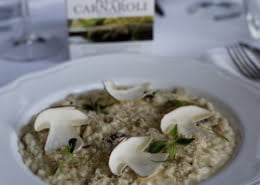 https://riservasanmassimo.net/wp-content/uploads/2019/11/Risotto-ai-porcini-cotti-e-crudi-mantecato-al-taleggio-e-castagne-ristorante-brunello-1.jpg
500
500
Marco B
https://riservasanmassimo.net/wp-content/uploads/2021/03/RSM-Logo-RGB300x195.png
Marco B2019-11-22 15:53:492019-11-22 15:54:26Risotto with cooked and raw Porcini, creamed with Taleggio and chestnut powder
https://riservasanmassimo.net/wp-content/uploads/2019/11/Risotto-ai-porcini-cotti-e-crudi-mantecato-al-taleggio-e-castagne-ristorante-brunello-1.jpg
500
500
Marco B
https://riservasanmassimo.net/wp-content/uploads/2021/03/RSM-Logo-RGB300x195.png
Marco B2019-11-22 15:53:492019-11-22 15:54:26Risotto with cooked and raw Porcini, creamed with Taleggio and chestnut powder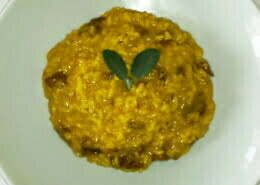 https://riservasanmassimo.net/wp-content/uploads/2019/11/Risotto-giallo-con-funghi-e-salsiccia-ristorante-Campo-delle-stelle-1.jpg
700
700
Marco B
https://riservasanmassimo.net/wp-content/uploads/2021/03/RSM-Logo-RGB300x195.png
Marco B2019-11-22 15:46:132019-11-22 15:46:56Yellow risotto with Mushrooms and Salsiccia
https://riservasanmassimo.net/wp-content/uploads/2019/11/Risotto-giallo-con-funghi-e-salsiccia-ristorante-Campo-delle-stelle-1.jpg
700
700
Marco B
https://riservasanmassimo.net/wp-content/uploads/2021/03/RSM-Logo-RGB300x195.png
Marco B2019-11-22 15:46:132019-11-22 15:46:56Yellow risotto with Mushrooms and Salsiccia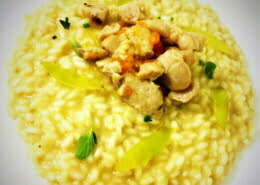 https://riservasanmassimo.net/wp-content/uploads/2019/11/risotto-uva-ragu-animelle-1.jpg
750
750
Marco B
https://riservasanmassimo.net/wp-content/uploads/2021/03/RSM-Logo-RGB300x195.png
Marco B2019-11-22 13:09:212019-11-22 13:11:28Risotto with white grapes and sweetbread ragout
https://riservasanmassimo.net/wp-content/uploads/2019/11/risotto-uva-ragu-animelle-1.jpg
750
750
Marco B
https://riservasanmassimo.net/wp-content/uploads/2021/03/RSM-Logo-RGB300x195.png
Marco B2019-11-22 13:09:212019-11-22 13:11:28Risotto with white grapes and sweetbread ragout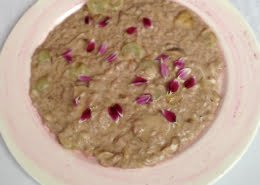 https://riservasanmassimo.net/wp-content/uploads/2019/11/Risotto-ai-funghi-porcini-ristorante-tacabutun-1.jpg
750
750
Marco B
https://riservasanmassimo.net/wp-content/uploads/2021/03/RSM-Logo-RGB300x195.png
Marco B2019-11-22 12:50:382019-11-22 12:52:41Risotto with Porcini mushrooms and white grapes
https://riservasanmassimo.net/wp-content/uploads/2019/11/Risotto-ai-funghi-porcini-ristorante-tacabutun-1.jpg
750
750
Marco B
https://riservasanmassimo.net/wp-content/uploads/2021/03/RSM-Logo-RGB300x195.png
Marco B2019-11-22 12:50:382019-11-22 12:52:41Risotto with Porcini mushrooms and white grapes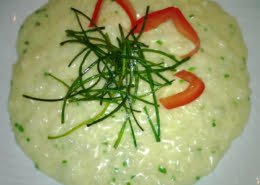 https://riservasanmassimo.net/wp-content/uploads/2019/10/Risotto-tartufato-mantecato-con-stracchino-ed-erba-cipollina.jpg
700
700
Marco B
https://riservasanmassimo.net/wp-content/uploads/2021/03/RSM-Logo-RGB300x195.png
Marco B2019-11-22 01:20:192019-11-22 01:22:14Truffeled risotto with stracchino cheese and chives
https://riservasanmassimo.net/wp-content/uploads/2019/10/Risotto-tartufato-mantecato-con-stracchino-ed-erba-cipollina.jpg
700
700
Marco B
https://riservasanmassimo.net/wp-content/uploads/2021/03/RSM-Logo-RGB300x195.png
Marco B2019-11-22 01:20:192019-11-22 01:22:14Truffeled risotto with stracchino cheese and chives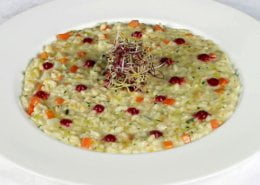 https://riservasanmassimo.net/wp-content/uploads/2019/10/Risotto-di-Carnaroli-integrale-punteggiato-di-rapa-rossa-copia.jpg
500
500
Marco B
https://riservasanmassimo.net/wp-content/uploads/2021/03/RSM-Logo-RGB300x195.png
Marco B2019-11-22 01:07:122019-11-22 01:08:47Carnaroli whole grain risotto with spots of beetroot
https://riservasanmassimo.net/wp-content/uploads/2019/10/Risotto-di-Carnaroli-integrale-punteggiato-di-rapa-rossa-copia.jpg
500
500
Marco B
https://riservasanmassimo.net/wp-content/uploads/2021/03/RSM-Logo-RGB300x195.png
Marco B2019-11-22 01:07:122019-11-22 01:08:47Carnaroli whole grain risotto with spots of beetroot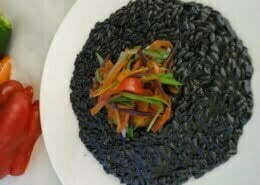 https://riservasanmassimo.net/wp-content/uploads/2019/09/Risotto-al-nero-di-seppia-con-julienne-di-verdurine.jpg
934
1404
Marco B
https://riservasanmassimo.net/wp-content/uploads/2021/03/RSM-Logo-RGB300x195.png
Marco B2019-11-22 00:52:102019-11-22 00:54:30Risotto with squid ink, cuttlefish and vegetables julienne-style
https://riservasanmassimo.net/wp-content/uploads/2019/09/Risotto-al-nero-di-seppia-con-julienne-di-verdurine.jpg
934
1404
Marco B
https://riservasanmassimo.net/wp-content/uploads/2021/03/RSM-Logo-RGB300x195.png
Marco B2019-11-22 00:52:102019-11-22 00:54:30Risotto with squid ink, cuttlefish and vegetables julienne-style
